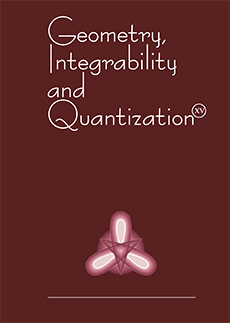Abstract
In this paper we give a summary of the geometrical background of the idea of spontaneous symmetry breaking. For this purpose, we set out to discuss Yang–Mills–Higgs gauge theories from the perspective of reducible bundles. From this viewpoint, “elementary particles” are identified with vector bundles, and sections are considered to geometrically represent the states of the corresponding particle. Some physical background on the notion of “mass” is given in the introduction. Since the geometrical interpretation of a gauge boson is that of a connection, we proceed to discuss how, from a geometrical point of view, the Higgs boson can also be considered a connection. We start out with Connes’ algebraic approach, where the “shifted Higgs boson” is considered a gauge potential on a non-commutative space. We summarize how a specific generalization of the notion of a Dirac operator can be used in order to define a generalization of de Rham’s algebra. This generalization is used to define the non-commutative equivalent of the Yang–Mills action where its minima spontaneously break the gauge symmetry. In the last section we summarize how the Higgs boson can be considered a connection on a Clifford module bundle.
Information
Digital Object Identifier: 10.7546/giq-3-2002-141-162


